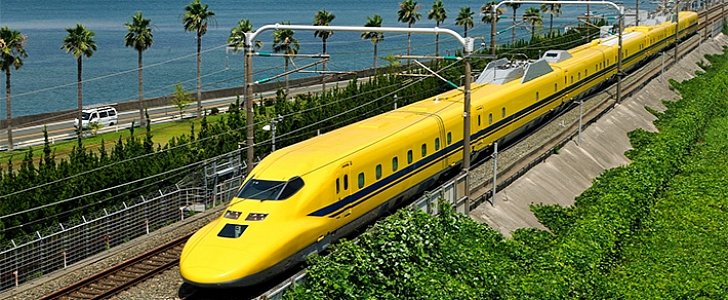There's an old saying that claims that if something is working, don’t change it. For the Japanese, perfectionists to the core, something just working is not enough.
For decades now, since the introduction of the world-famous Shinkansen bullet trains, we’ve gotten used to seeing Japanese officials apologizing for minuscule yearly delays in arrival times for trains across the islands. Punctuality, it seems, it a matter of honor and pride for the Japanese.
That’s why hearing that local engineers will be spending the next two years and a sizeable amount of money on making a train route in the country one minute faster than today does not surprise us.
According to Japanese publication Nikkei, a trip on a train that links a Tokyo station to one in the Saitama prefecture is currently being made at speeds of 110 km/h (68 mph). That speed could be increased, says local railway operator JR East, to up to 130 km/h (80 mph) should some engineering work be done.
The reason why trains don’t travel faster is that the area is densely populated. Fast moving trains would break the imposed noise level, and there’s also some worrying about the effects of the resulting vibration.
JR East has a solution to that: installing sound absorbing panels along the track where it is adjacent to residential areas and raising the height of the soundproof wall.
Nikkei claims that, despite apparently being not such a mammoth task, it will take around two years to complete the modifications. And what will result at the end of the project?
About one minute shaved off travel times between the two stations. That might not seem much, but JR East says "speeding up in other sections also has a great significance in terms of management."
Add to that the fact that a minute saved here might mean thousands of travelers don't cross paths somewhere else along the way, creating the usual congestion, and the Japanese might be on to something.
That’s why hearing that local engineers will be spending the next two years and a sizeable amount of money on making a train route in the country one minute faster than today does not surprise us.
According to Japanese publication Nikkei, a trip on a train that links a Tokyo station to one in the Saitama prefecture is currently being made at speeds of 110 km/h (68 mph). That speed could be increased, says local railway operator JR East, to up to 130 km/h (80 mph) should some engineering work be done.
The reason why trains don’t travel faster is that the area is densely populated. Fast moving trains would break the imposed noise level, and there’s also some worrying about the effects of the resulting vibration.
JR East has a solution to that: installing sound absorbing panels along the track where it is adjacent to residential areas and raising the height of the soundproof wall.
Nikkei claims that, despite apparently being not such a mammoth task, it will take around two years to complete the modifications. And what will result at the end of the project?
About one minute shaved off travel times between the two stations. That might not seem much, but JR East says "speeding up in other sections also has a great significance in terms of management."
Add to that the fact that a minute saved here might mean thousands of travelers don't cross paths somewhere else along the way, creating the usual congestion, and the Japanese might be on to something.

